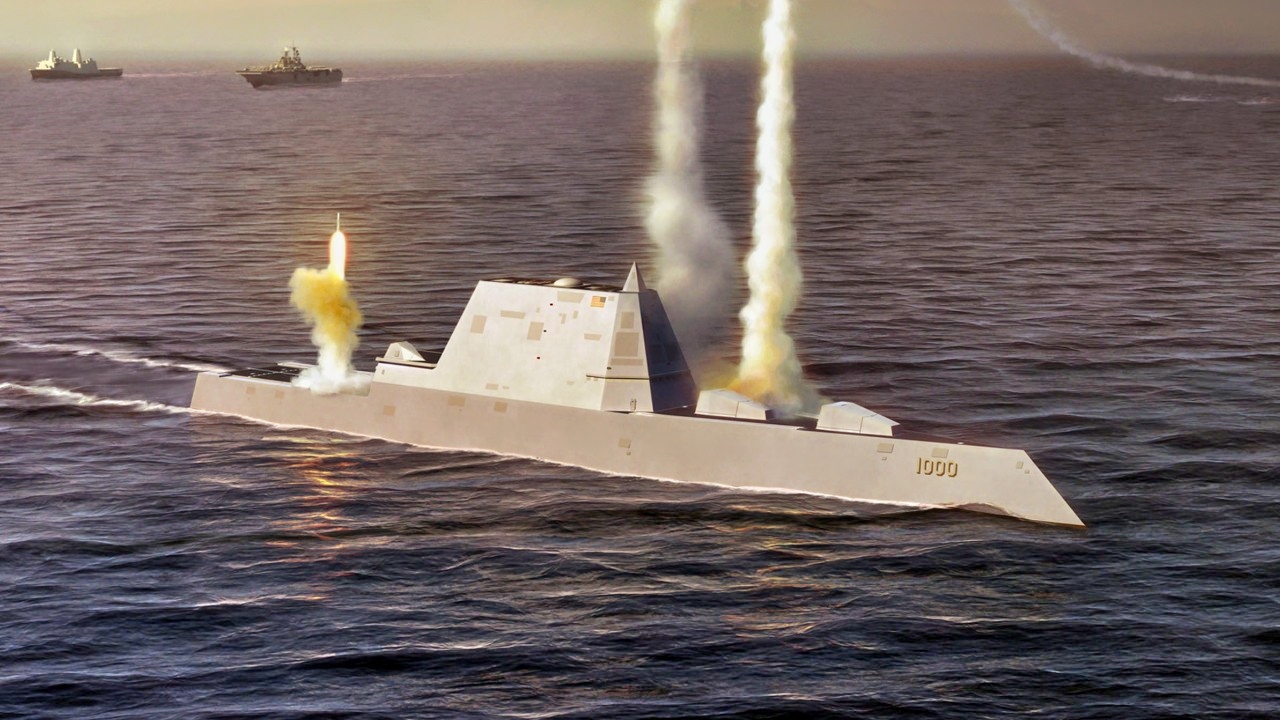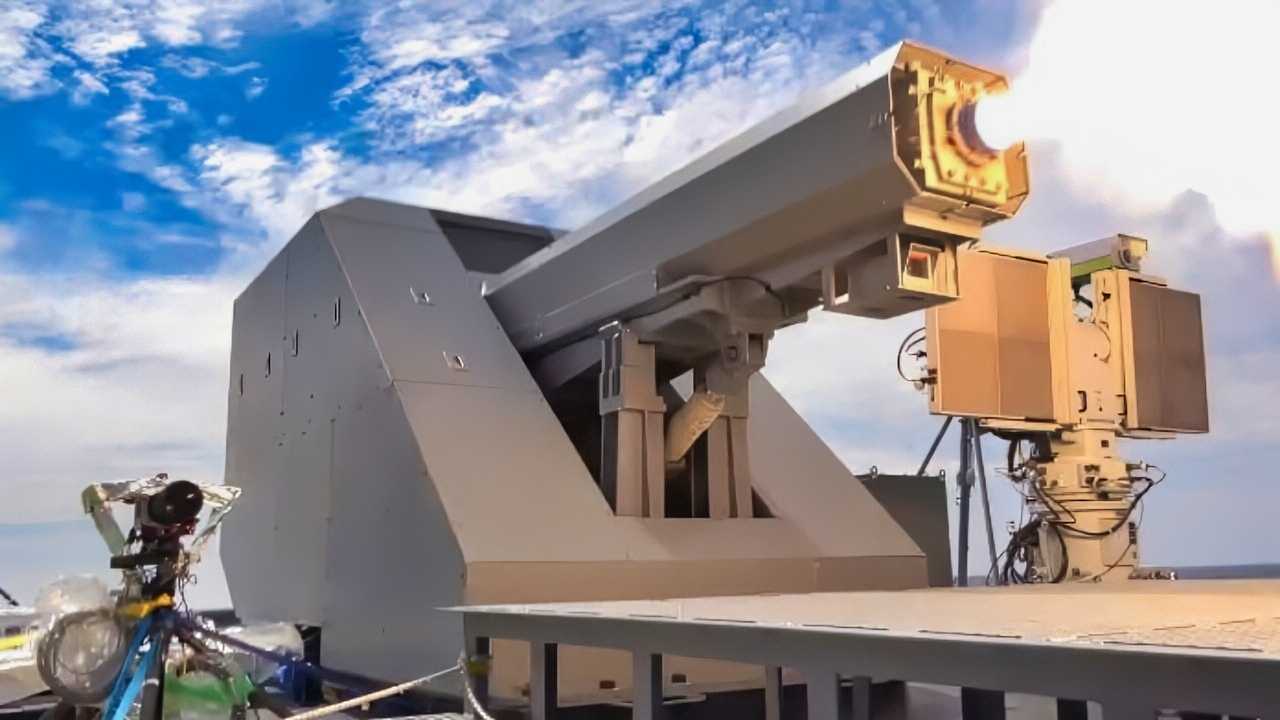Key Points and Summary – The Navy railgun advanced fast—and then vanished. The reasons were practical: barrels cracked from brutal heat and electromagnetic stress in under 30 shots, fire rates lagged, and only ships with vast exportable power (like Zumwalt) could feed 20–30+ megajoules per shot.
-Budget headwinds sealed the pause.

U.S. Navy Railgun Test. Image Credit: Creative Commons.

DAHLGREN, Va. (Jan. 31, 2008) Photograph taken from a high-speed video camera during a record-setting firing of an electromagnetic railgun (EMRG) at Naval Surface Warfare Center, Dahlgren, Va., on January 31, 2008, firing at 10.64MJ (megajoules) with a muzzle velocity of 2520 meters per second. The Office of Naval Research’s EMRG program is part of the Department of the Navy’s Science and Technology investments, focused on developing new technologies to support Navy and Marine Corps war fighting needs. This photograph is a frame taken from a high-speed video camera. U.S. Navy Photograph (Released)
-The core payoff survived, though: the hypervelocity projectile now flies from conventional 5-inch guns and Army howitzers, delivering non-explosive, high-speed effects.
-With Japan fielding a shipboard railgun and U.S. progress in compact pulsed power and heat-resistant materials, a comeback is plausible—if engineers can extend barrel life, shrink power systems, and deliver sustained, affordable rates of fire.
Whatever Happened to the Navy Railgun? Power, Heat—and a Possible Comeback?
The design of the US Navy’s promising rail gun weapon is to attack targets with the firepower and kinetic energy force equivalent to a multi-ton truck moving at 160 miles per hour.
Progress with the rail gun was rather substantial until the program suddenly and somewhat mysteriously disappeared.
In its place, the Navy and Pentagon focused on leveraging the weapon’s hypervelocity projectile for other weapons platforms.
Gunning for an Innovative Weapon
What happened to the U.S. Navy’s rail gun?
It was a huge priority for the Navy over a period of many years. The Office of Naval Research conducted years of experiments with the rail gun and pursued plans to arm Navy destroyers with the weapon.
The reasons for its cancellation pertain to a mixture of interwoven variables, which, not surprisingly, relate to cost concerns.
Beyond budget, however, there were some practical and tactical challenges associated with the weapon, including a slow rate of fire, a need for tremendous amounts of exportable power, and sustainment issues.

(July 28, 2022) U.S. Navy Zumwalt-class guided-missile destroyer USS Michael Monsoor (DDG 1001) sails in formation during Rim of the Pacific (RIMPAC) 2022, July 28. Twenty-six nations, 38 ships, three submarines, more than 30 unmanned systems, approximately 170 aircraft and 25,000 personnel are participating in RIMPAC from June 29 to Aug. 4 in and around the Hawaiian Islands and Southern California. The world’s largest international maritime exercise, RIMPAC provides a unique training opportunity while fostering and sustaining cooperative relationships among participants critical to ensuring the safety of sea lanes and security on the world’s oceans. RIMPAC 2022 is the 28th exercise in the series that began in 1971. (U.S. Navy photo by Mass Communication Specialist 3rd Class Aleksandr Freutel)

The US Navy’s troubled Zumwalt-class destroyers are being revitalized with the integration of Conventional Prompt Strike (CPS) hypersonic missiles, transforming them into powerful long-range strike platforms. The original class of 32 ships was cut to just three after its Advanced Gun System failed due to exorbitant costs. Now, these stealthy, $8 billion warships are having their defunct guns replaced with vertical launch tubes for hypersonic weapons. This upgrade will dramatically increase their strike range from a mere 63 miles to over 1,700 miles, making the Zumwalts relevant and formidable assets for deterring adversaries like China in the 21st century.
The most significant operational problem with the weapon is related to the massive amounts of heat, which would quickly damage the gun barrel, resulting in sustainment and maintenance issues.
The barrel of the gun was reportedly damaged after less than 30 shots, which would certainly challenge any ability to maintain the weapon.
The rail gun also required a massive amount of exportable electrical power, which only certain ships could provide, such as the Zumwalt-class destroyers, which used an electric Integrated Propulsion System to generate power.
Railgun Power & Technology
The energy or power of railguns is measured in units of electromagnetic power or force, called megajoules, with one megajoule equivalent to the energy of a one-ton vehicle moving at 160 miles per hour.
The service tested railgun force up to high numbers of megajoules, ranging from 21 to 32 megajoules or more. Railgun applications unleash a massive amount of force upon a target.
The railgun draws its power from an onboard electrical system or a large battery, which Navy developers said consists of five parts: a launcher, an energy storage system, a pulse-forming network, a hypervelocity projectile, and a gun mount.
Railgun weapons work when electrical power charges a pulse-forming network, made up of capacitors, which can release enormous amounts of energy in a very short period of time. The weapon releases a current on the order of 3 to 5 million amps—that’s 1,200 volts released in a ten-millisecond time frame.
That is enough force to accelerate a mass of approximately 45 pounds from zero to five thousand miles per hour in one one-hundredth of a second.
Hypervelocity Projectile
The Navy, DoD, and even the Army have been experimenting in recent years with integrating the railgun hypervelocity projectile with existing weapons platforms, such as the Navy’s 5-inch guns or the Army’s Howitzers.
Due to its ability to reach speeds of up to 5,600 miles per hour, the hypervelocity projectile is engineered as a kinetic energy warhead, meaning no explosives are necessary.
The hypervelocity projectile itself can travel at speeds up to 2,000 meters per second, a speed that is about three times that of most existing weapons.
Railgun Comeback?
The idea of a railgun comeback raises some interesting questions. The tactical merits of such a weapon need little explanation.
Japan has armed one ot its warships with an operational railgun, which could inspire further US development.
The range and sheer destructive power of a railgun could significantly enhance maritime attack capabilities, provided the US Navy can develop methods to mitigate damage to the barrel and create new sources of transportable electrical power that can be integrated into warships.
The Navy is already making great progress in engineering newer small form factor methods of storing and transmitting electrical power, and it certainly seems feasible that weapons developers might be able to engineer and build a more durable, heat-resistant barrel.
About the Author: Kris Osborn, Warrior Maven President
Kris Osborn is the President of Warrior Maven – Center for Military Modernization. Osborn previously served at the Pentagon as a highly qualified expert in the Office of the Assistant Secretary of the Army—Acquisition, Logistics & Technology. Osborn has also worked as an anchor and on-air military specialist at national TV networks. He has appeared as a guest military expert on Fox News, MSNBC, The Military Channel, and The History Channel. He also has a Masters Degree in Comparative Literature from Columbia University.
More Military
Russia’s Su-34 Fullback Fighter-Bombers Are Going Down in Ukraine
America Bought A Massive Fleet of MiG-29 Fighters
Russia’s MiG-41 6th-Generation Mach 4.3 ‘NGAD’ Fighter Nightmare Begins
A U.S. Navy Nuclear Attack Submarine Sank Due to an ‘Uncovered Manhole’ Mishap
The U.S. Navy’s Nuclear Aircraft Carrier Nightmares are Just Beginning










